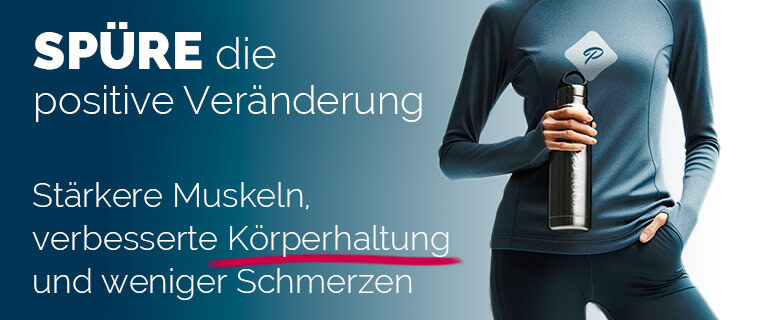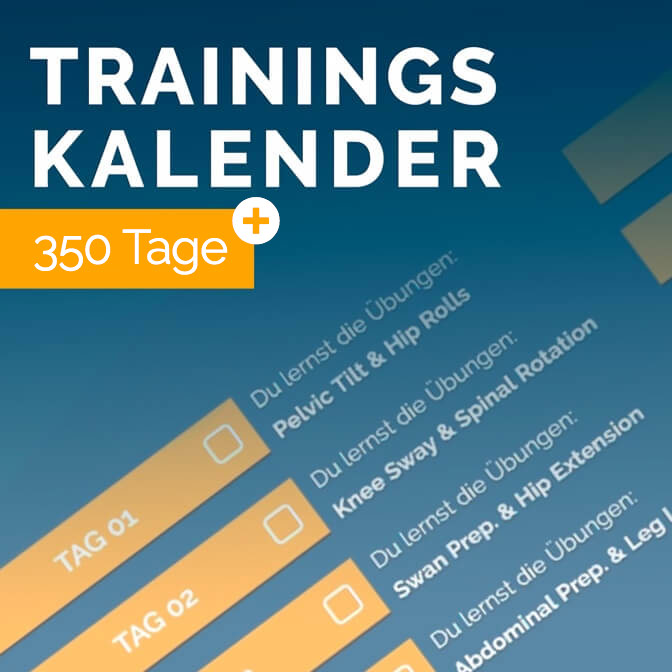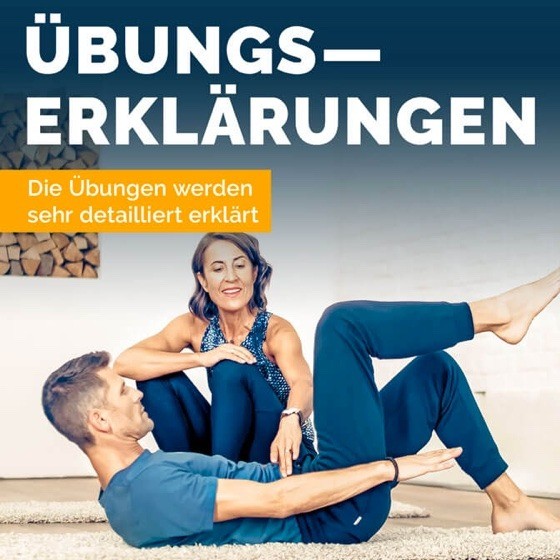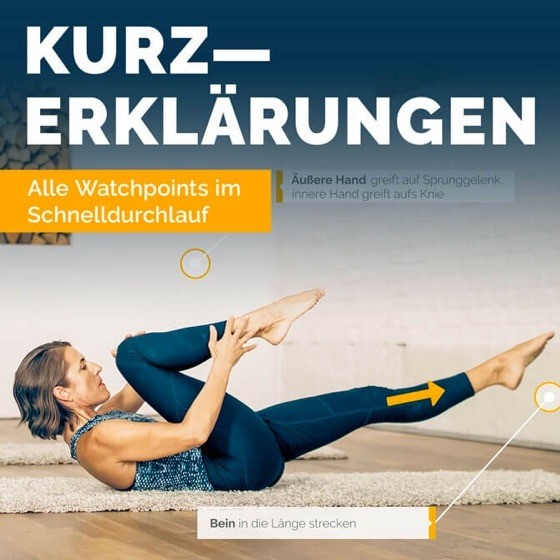
Pilates exercises explained
Hip Twist
The Pilates exercise "Hip Twist" resembles a small balancing exercise between the upper and lower body and challenges the core muscles as well as flexibility in the chest and hip area at a high level. The circles, which are performed with the legs, increase in radius with increasing strengthening of the core muscles.
Exercise description
Sitting, with the hands behind the body, the chest opens to allow the collarbones to "smile". The weight is behind the ischial tuberosities. The abdomen is active and the legs are stretched into the air. The back is long.
On the exhalation, pull the legs to the left, then let them sink down and guide them to the right.
Inhaling continue the circle with the legs back to the center as close to the body as possible.
Exhaling change direction.
Finally, pull the knees to the chest and put the legs bent back on the mat.
Draw the circle 3 to 6 times alternately in each direction.
Frequently asked questions
Does the pelvis need to remain still?
In any case, it should remain so stable that you do not fall into a hollow back.

Pro Tip From Maria
If supporting yourself on your hands hurts or your chest is not flexible enough, you can support yourself on your forearms.
Similarly, the legs can also be bent to shorten the lever a little.
Video with the brief explanation of the Pilates exercise Hip Twist
Most common errors
Hypermobile elbow joints are often overstretched. Here, care should be taken to ensure that the joints feel soft.
Assistance
What can you do if the exercise is too difficult?
Bend legs.
Shift support position to forearms.
Muscle groups
- Transversus
- Multifidus
- Obliquus internus
- Diaphragm Pelvis
- Deep neck muscles
- Rhomboideus
- Rectus Abdominis
- Obliquus Externus
- Quadriceps femoris
- Iliopsoas
- Deltoid
- Latissimus
Equipment
- Mat
Difficulty
- Difficult









